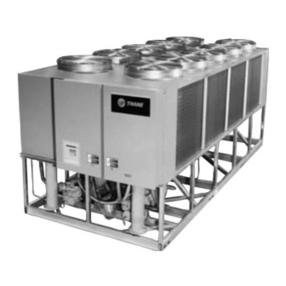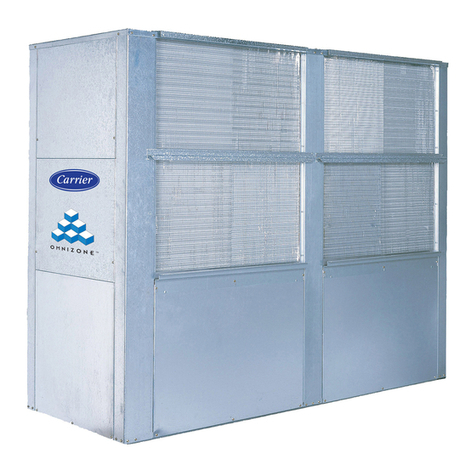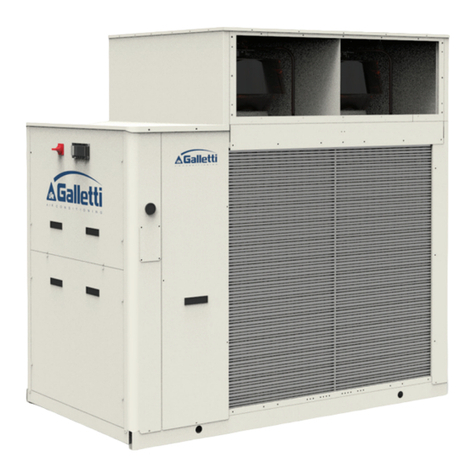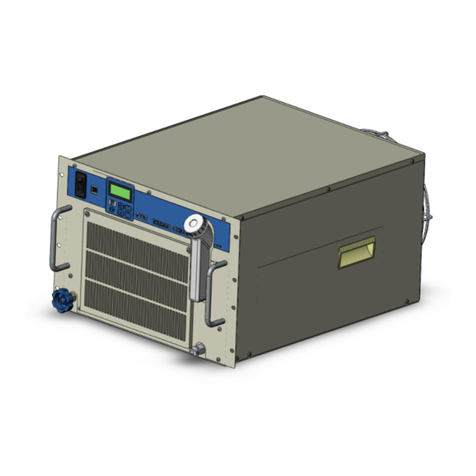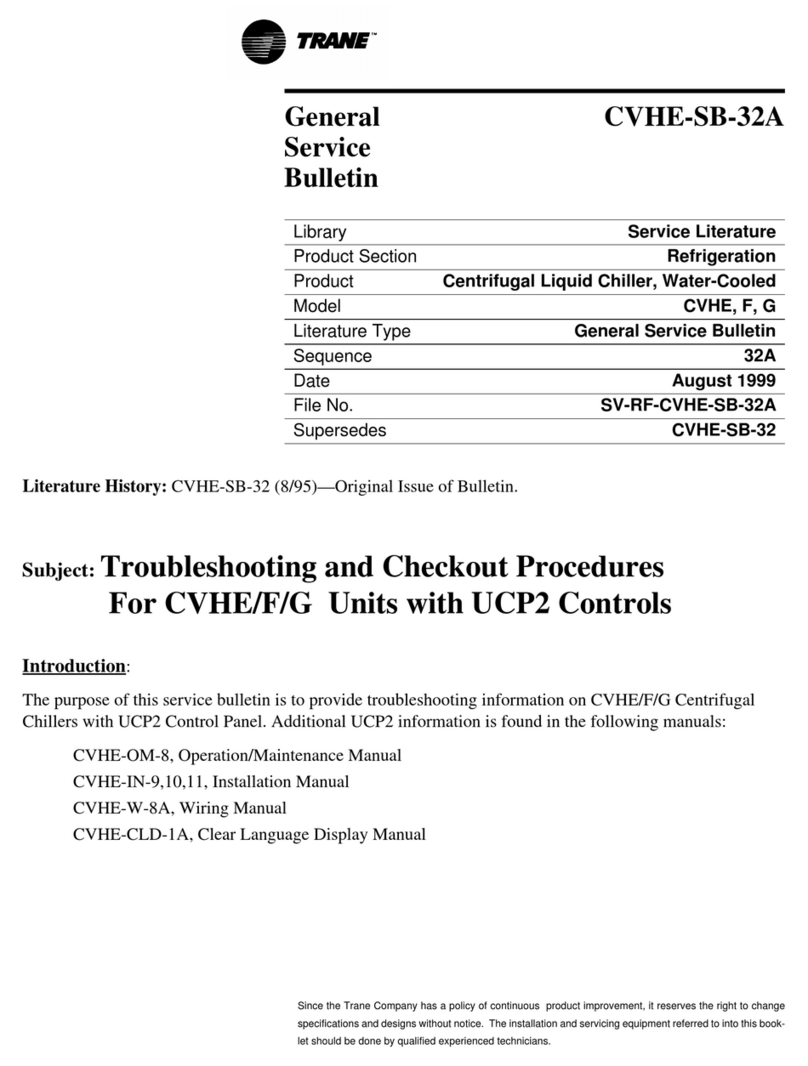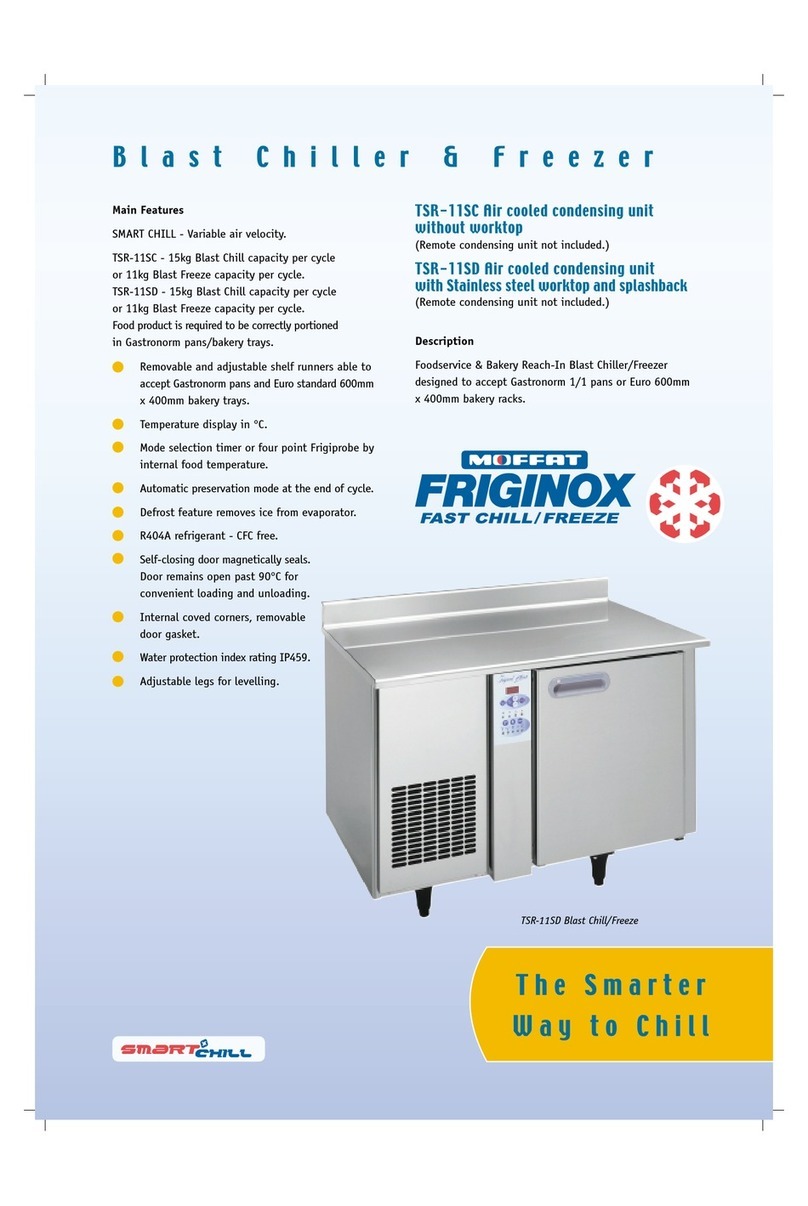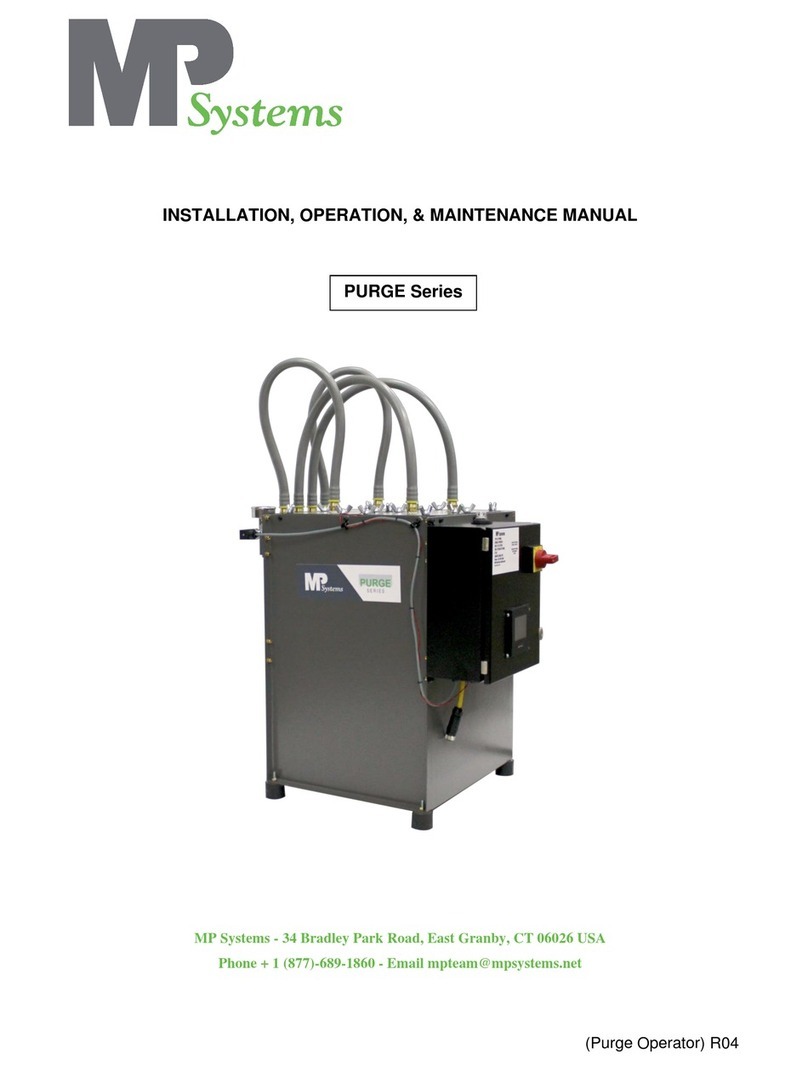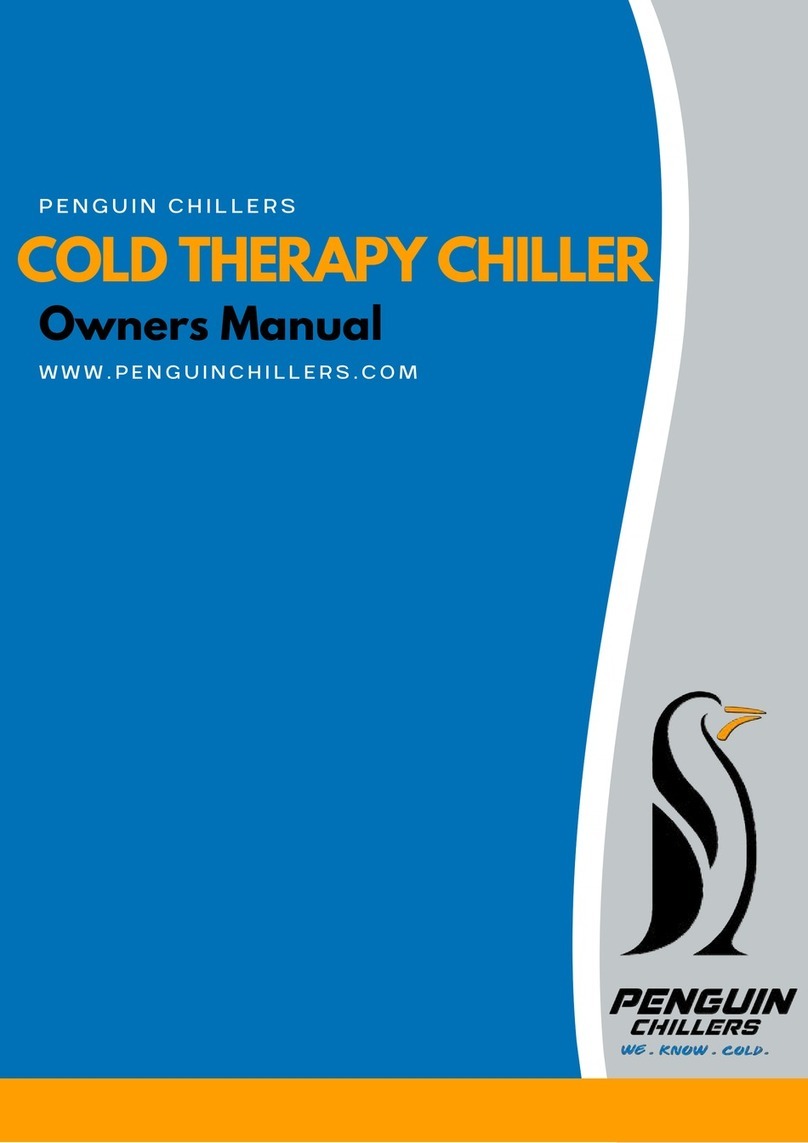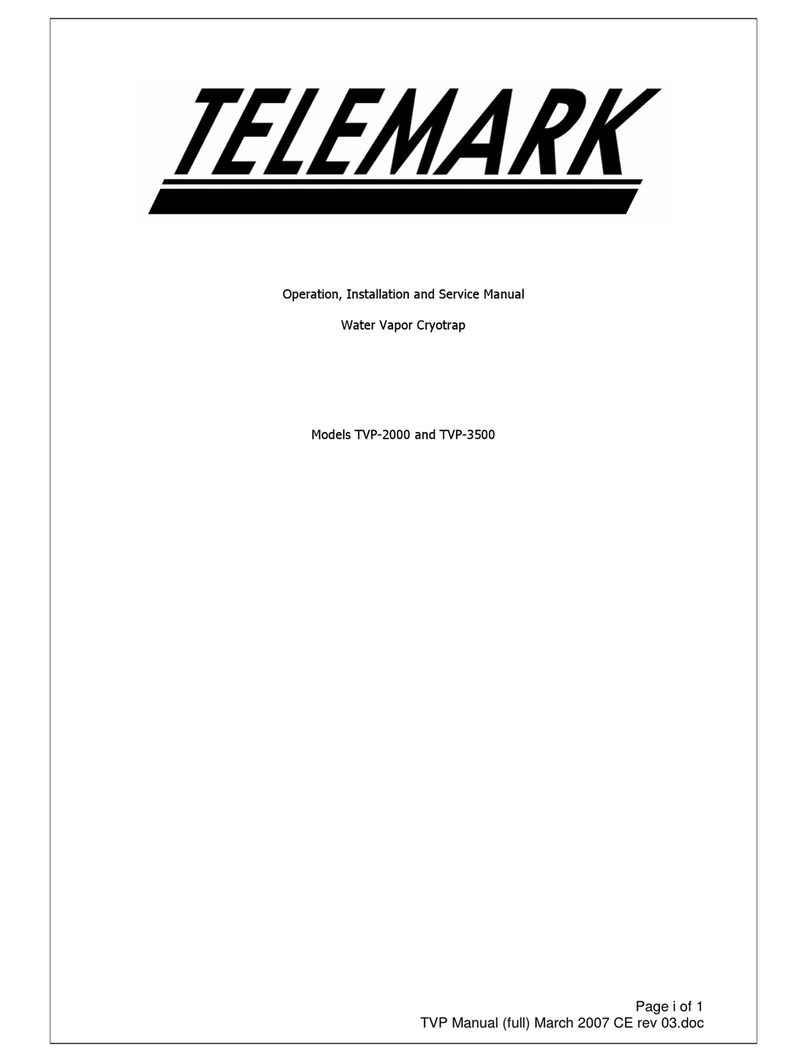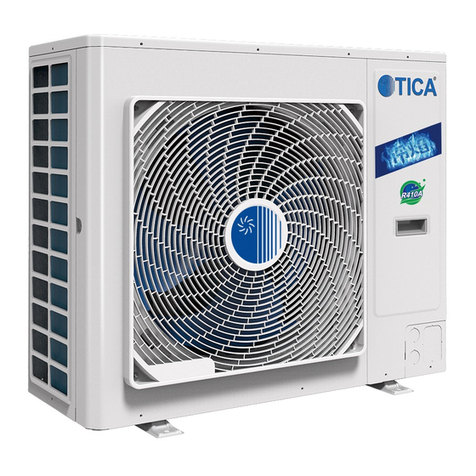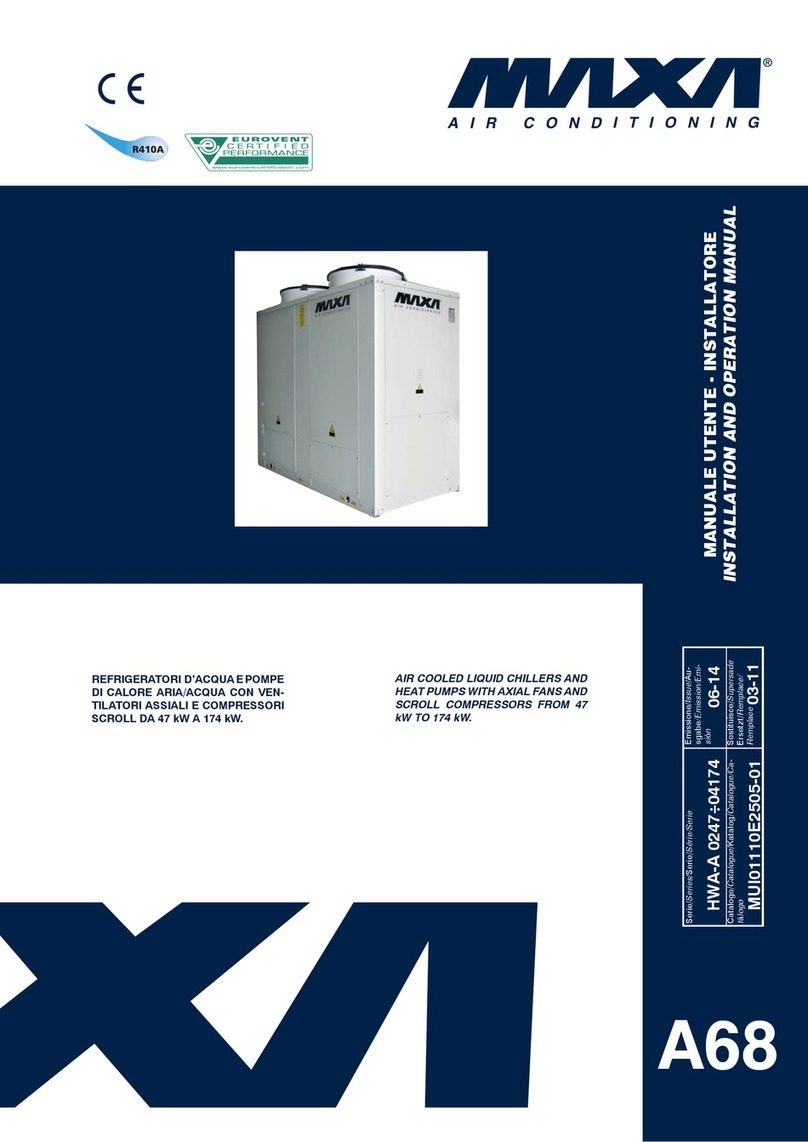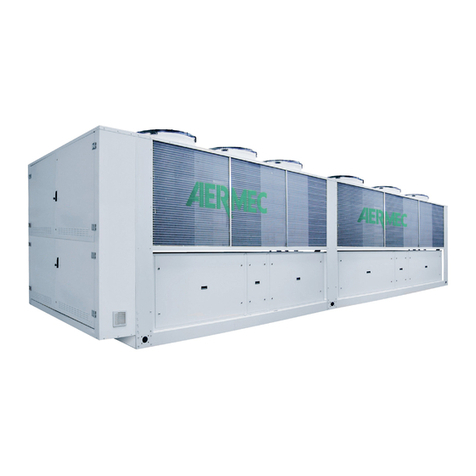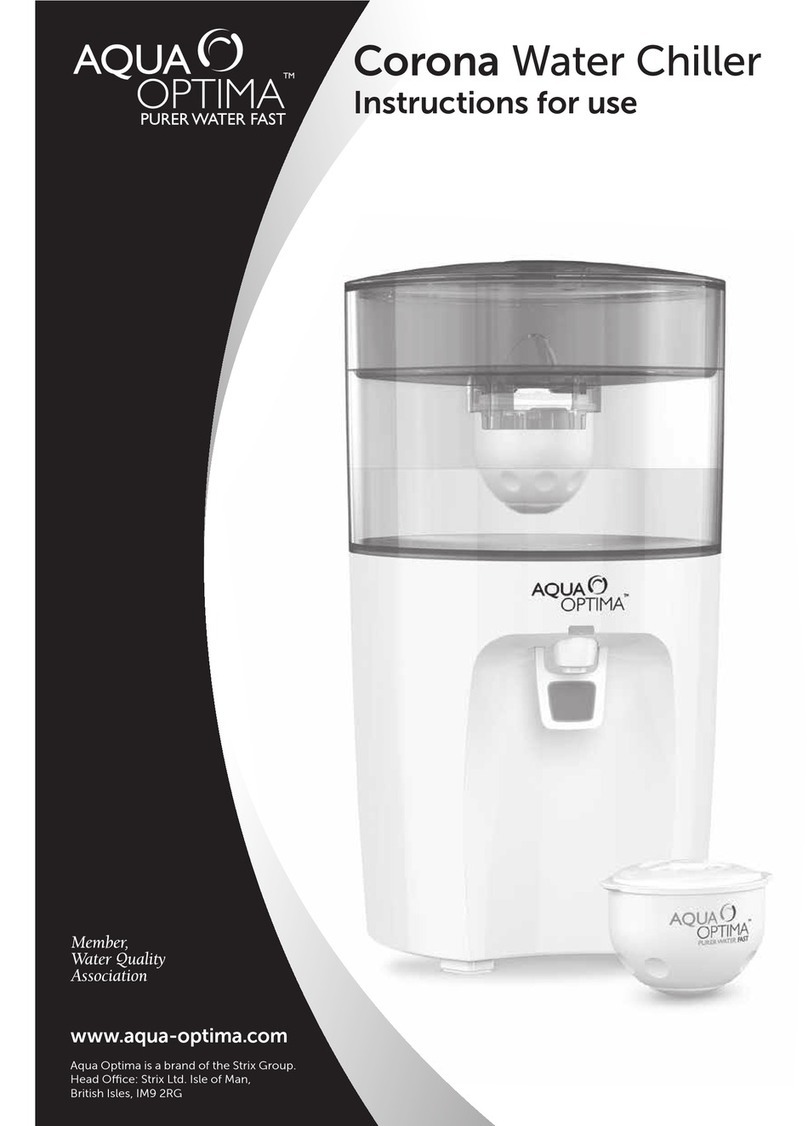considering the directives and the attached
harmonised standards of the European Union,
as well as the related product standards
associated with it (See specific paragraph).
This manual is an integral part of the blast
chiller, identified in the present manual with
the term machine/partly completed
machinery produced by the company
Nuovair S.r.l. and part of the related
technical file Before carrying out any
operation on the machine/ partly completed
machinery, it is recommended that you
carefully read this manual so as to perform
all installation, commissioning, use,
maintenance, disassembly and disposal
operations in a correct and safe manner.
NOTE:
The blast chiller is a machine intended solely
for professional use and therefore must be
used only by qualified and trained personnel.
NOTE:
The customer can request a copy of this
documentation by writing to Nuovair S.r.l.
explaining the reason for such request.
INTENDED USE
The blast chiller is a machine designed for
the rapid cooling of products, substances
or mixture of substances, in any state of
the materia and structure not worked,
partially worked, or worked, destined to be
ingested by a human being (Food
products) with the purpose of:
•• Keep the organoleptic features of the
food as unaltered as possible.
•• Favor the prolongation of the average
life of food by counteracting the bacterial
proliferation that naturally occurs within
the same both during the post-cooking
cooling phases and those of food
storage waiting the production of the
finished product.
The blast chiller is a manually operated
machine. Once the machine has started, the
blast chilling or freezing cycle is managed
automatically and does not require the
constant presence of an operator, except for
the loading and unloading of the product.
Once the cycle selected by the operator has
been completed, the machine switches to a
product maintenance/ preservation phase,
i.e. it maintains the cabinet temperature at a
predetermined value.
Rapid food cooling can be used to freeze the
product or to cool it according to timing and
end-of-cycle temperatures established by law.
The blast chiller is formed by two partly
completed machines: Chilling cabinet and
condensing unit.
REASONABLY FORESEEABLE
MISUSE OF THE MACHINE
The reasonably foreseeable incorrect uses
of a blast chiller are:
•• Position the blast chiller in potentially
explosive environments.
•• Position the blast chiller in external
environments.
•• Position the blast chiller on unsuitable
surfaces, and on uneven surfaces or with
slopes which could be anomalous at times.
•• Use the machine for freezing live animals.
•• Use the machine for purposes other than
those for which it was designed or to treat
products other than food.
ABSOLUTELY FORBIDDEN USE
The absolutely forbidden uses of a blast chill-
er are:
•• Use the blast chiller as a working surface
or base to support other objects or
machines.
•• Get on and climb on the machine.
•• Touch the internal parts of the machine
with wet and nacked hands and feet.
•• Insert live animals or human beings inside
the machine.
7
